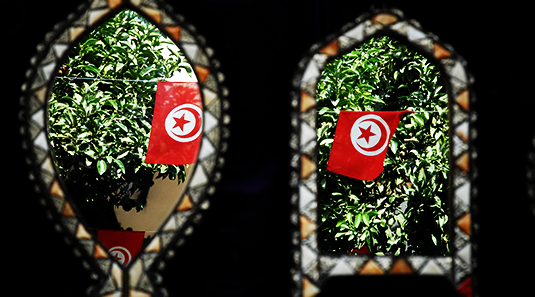
Tunisia
Capital city — Tunis
Country population
i2017Incarceration rate (per 100,000 inhabit…
Type of government
Human Development Index
i2016/ UNDPName of authority in charge of the pris…
Total number of prisoners
Prison density
Total number of prison facilities
i2016An NPM has been established
Yescreated in 2013
Female prisoners
Untried prisoners
Death penalty is abolished
No, but abolitionnist in practiceno execution sinc…
The penitentiary system
Premises
Prisons are divided into three categories (link in French), depending on their capacity:
- Category A : more than 2000 inmates
- Category B : more than 1000 inmates
- Category C : fewer than 1000 inmates
In 2016 Tunisian prison buildings were for the most part dilapidated relics of the colonial era. They are often former colonial farms, both damp and insanitary, which suffered a great deal of damage in the revolutionary uprisings. The buildings are unsuited for their current usage. They were not intended to hold prisoners. Visiting and activity areas were not designed for these purposes. [^visites]
Mornaguia Prison is a more modern institution, opened in the 2000s.
Since 2011 the Tunisian government has undertaken an infrastructure reconstruction and modernisation programme with the support of international cooperation.
[^visites]:OMCT Tunisie, “Rapport relatif à la mise en œuvre d’un dispositif de réclamations dans les prisons de Tunisie” (link in French), 2015, p. 6.
Number of available places for prisoners
18,000
Prison staff come under the authority of the DGPR within the Ministry of Justice.
The DGPR has recruited a significant number of security staff since 2011. Prison warders are trained at the Ecole Nationale des Prisons et de la Réhabilitation (National Academy for Prisons and Rehabilitation). The course consists largely of military-style training.
Prison warders are not allowed to carry firearms. However some prisons have watchtowers with armed guards. This has raised controversy following incidents during the revolutionary uprising which led to the deaths of dozens of prisoners.
Prison warders are heavily unionised. They complain about their poor pay and difficult working conditions, particularly as a result of serious understaffing. The shortage of security staff has been worsened by the fact that promotions made during the period of political transition have increasingly swollen the ranks of management.
The so-called civilian staff consists of administrative staff, social workers, psychologists and training staff. The role of the prison welfare office is to receive, monitor and aid the reintegration of prisoners. In practice the work is restricted to completing the welfare files of detainees because of understaffing and lack of professional recognition. These files are used particularly in deciding on pardons. The shortage of prison warders also leads to civilian staff being called on for security tasks such as checking food parcels or supervising visiting areas.
One detainee is nominated as “dormitory head” by the prison management. He is responsible for maintaining order in cells with up to a hundred inmates. He takes care of things such as allocating sleeping places, organising cleaning rotas, drawing up orders from the shop and organising medical appointments. He is also a link between his fellow detainees and prison staff (reporting incidents, gathering information). The system gives these dormitory heads powers which are open to abuse.